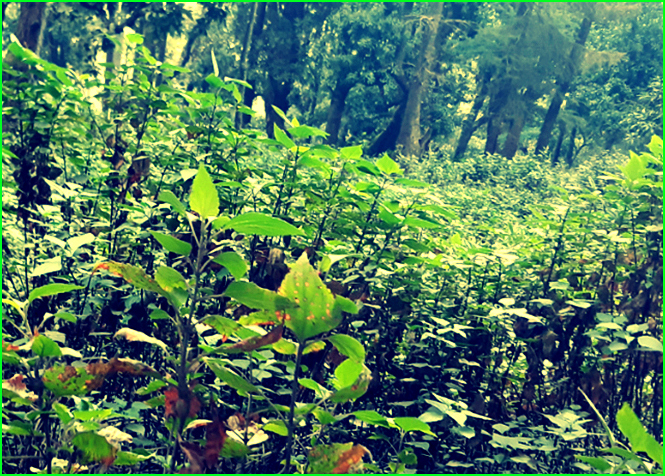Eupatorium adenophorum- an invasive plant in Pauri, Uttarakhand.
The lush green forest cover that adds to the beauty of Pauri town in Uttarakhand has been under threat from some invasive plants. During the past 2 decades, there has been a marked rise in the population of Eupatorium adenophorum also known as Mexican devil.
This invasive plant belongs to the family Asteraceae and it has large amount of flowers and light seeds with high germination percentage, which spread from one place to other through wind. The plants in the slopes spread very speedily and now almost every corner of the forest of Pauri is covered by this invasive species .
This species E. adenophorum is also responsible for increasing the wildfire in hilly regions. This hilly town has dense forest cover consisting mainly of Pinus, Quercus, Deodara etc. which harbors many important flora and fauna. The decomposition of the Eupatorium adds on to the forest litter which has been found to increase the Nitrogen content in the forest soil thereby giving rise to a more productive soil for vigorous growth of other invasive plants.
It has been observed that the increasing amount of Nitrogen in the soil leads to the extensive growth of invasive species which ultimately results in creating a pressure and competition for food among the native plants and the invasive plants. The excessive multiplication of this invasive species has also effected the microclimate of the forest trees. The useful microflora in the soil inhabited by the Eupatorium is also adversely affected and this leads to a decrease in their metabolic activities which are very necessary for recycling of many important soil nutrients. The result of all this deleterious activities leads to either accumulation of certain micronutrients or their depletion which induces certain detrimental changes in the forest ecosystem.
The dried litter along with Pine needles and other coniferous litters results in intensified forest fires, thus destroying the habitat of many wild animals thereby threatening their existence. Serious measures are needed to control this invasiveness so that the habitat of local fauna can be protected. The Government sector and the Forest departments are not paying any attention to this harmful behavior of this invasive species. If we have to protect the local flora and fauna than the eradication methodologies have to be strictly implemented in all the parts of forest infested with this invasive plant.
--- Dr. Snehlata Bhandari



